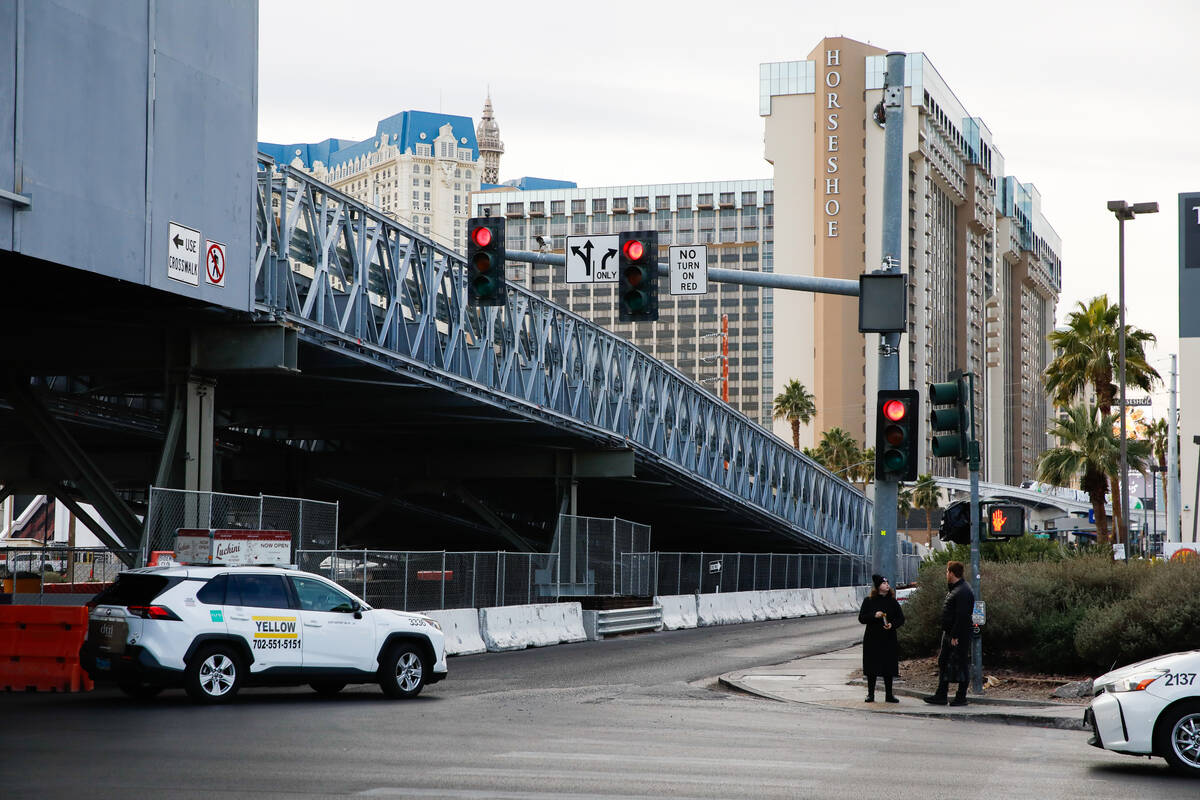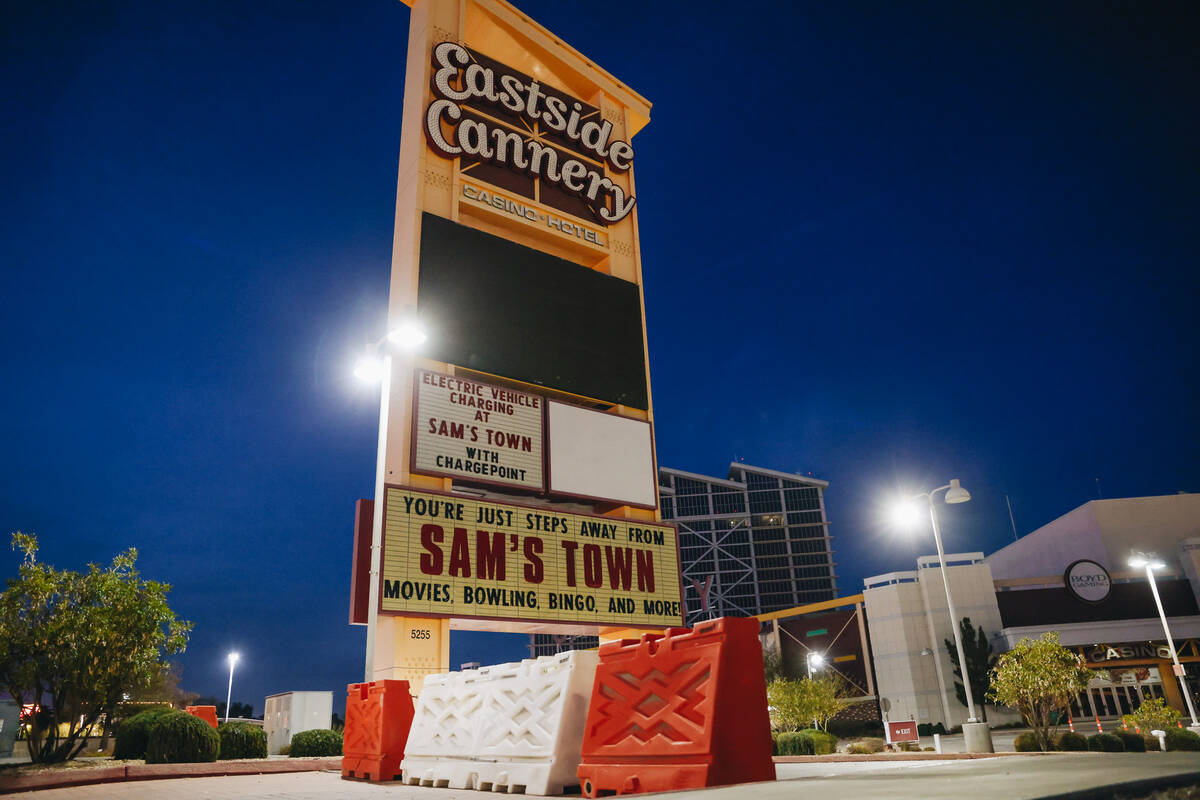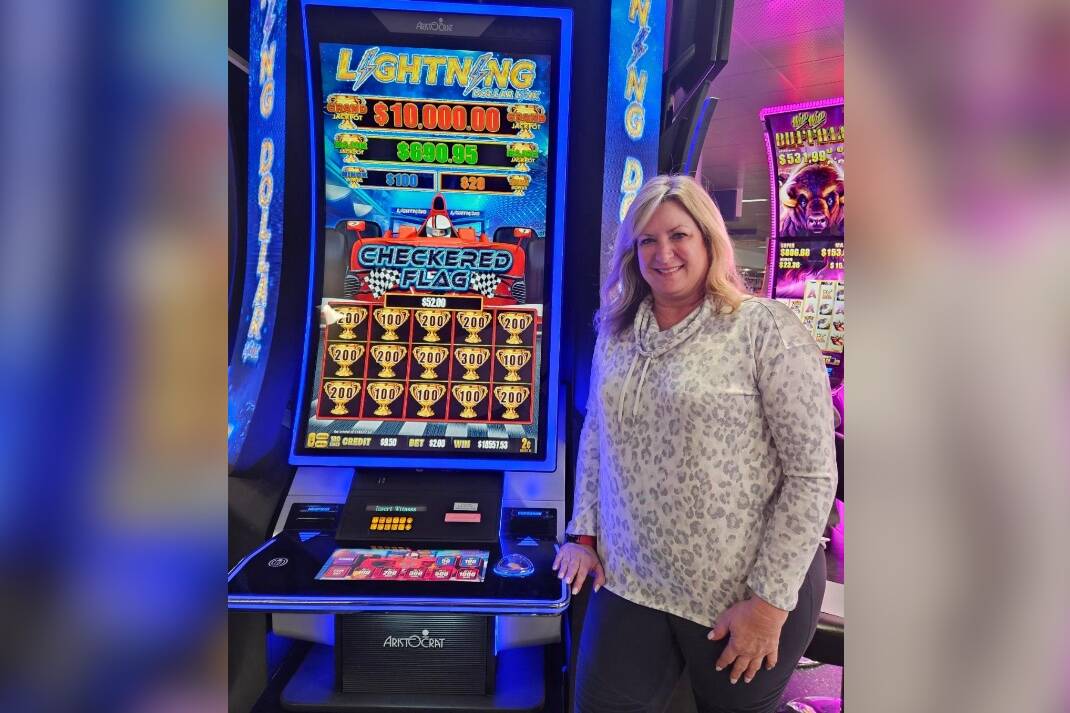When Lisa Mayo-DeRiso, representing nine local businesses, approached the Las Vegas Convention and Visitors Authority this month expressing concern about losses incurred in the run-up to November’s Formula 1 race, she had two big questions.
First, he wanted a temporary 760-foot bridge over Flamingo Road built over Koval Lane removed. Second, he wanted a fund created to compensate businesses that had lost millions of dollars due to the blockade of restaurants, convenience stores and gas stations in the vicinity of Koval Lane, Flamingo Road and Harmon Avenue.
Last week, the companies received word that F1, Clark County and the LVCVA would remain committed to removing the bridge.
“This is the positive outcome we were hoping for and it was our intention all along,” said Randy Markin, owner of the Stage Door Casino and Battista’s Hole-in-the-Wall restaurant. “I hope our Stage Door regulars come back and celebrate the Super Bowl with us, and we’ll make sure tourists know Battista is now easy to get to.”
Markin and other area businesses hoped the bridge would collapse soon after the Nov. 18 race, just as bleachers and viewing areas along the Strip collapsed.
Now, companies may have a new concern: a proposal for a permanent bridge structure in the same location because traffic flow has been improved as a result of the temporary structure.
Before last week’s announcement, Mayo-DeRiso had said that a long delay in removing the bridge would mean it would have to recalculate the amount of losses its customers suffered. He estimated the total at about $23 million. Given that losses will continue to occur until Feb. 5, when the removal project is scheduled to be completed, he said the total could increase by another couple of million dollars.
Compensation Fund
As for a fund to compensate businesses for their losses, LVCVA board chairman Jim Gibson said he isn’t ready to consider it yet.
“I’ve been in discussions with some of the companies involved, and Steve Hill (LVCVA president and CEO) has had more discussions than I’ve had with them,” Gibson said in a phone interview. “And there are a couple of others that I intend to contact next week that he will also speak to. But frankly I don’t think any of us are ready to talk about funds yet or what their structure would be or anything else.”
Gibson said he understands why people are angry.
“We are keenly aware of how important it is to try to level the playing field for people and provide an opportunity where everyone has a fair chance to thrive when dominant events occur,” he said. “This is the first time we’ve used the county’s infrastructure to actually hold an event and it’s given us a whole host of learning experiences because we’ve never done it before and now we understand some things we wish we’d understood.”
While Gibson wasn’t ready to discuss what a compensation fund would look like, Mayo-DeRiso said you only need to think back to the days of COVID-19 to see a model of how companies can be compensated for losses incurred during F1.
“Just think about COVID and all the businesses that were shut down, and the federal government came in and said, ‘There’s a COVID relief fund for small businesses and we’re going to put money towards the recovery,’ and if you have a small business and you lost money or had to shut down for something, you can get relief,” Mayo-DeRiso said. “I know so many small businesses in this community, people I know, clients of mine, who have put in and gotten a hundred thousand dollars in relief funding.”
Who would put up the money? Mayo-DeRiso suggested that some of the race’s biggest beneficiaries — Formula One, Clark County and the LVCVA — allocate funds. He argued that such entities generated revenue through sponsorships and increased tax collection from the high volume of room, sales and gaming taxes that occurred as a result of the arrival of race fans on the Strip.
Another question: who should be entitled to compensation?
Others affected
The nine businesses represented by Mayo-DeRiso weren’t the only ones affected by the choking traffic.
Tom Taicher, CEO and co-founder of Nectar Life, a bath and body products company with seven stores in Strip hotels, said his business was down 40-50% during the previous period the race, like many of its local faithful. customers didn’t come to his stores because of the inconvenience.
And Taicher said most of his 75 employees were late for work by up to 90 minutes because they couldn’t make their way through the traffic quagmire.
Uber drivers called and emailed me after the initial story of Mayo-DeRiso’s appearance before the LVCVA and asked if and how they could be compensated for the hours-long delay they had endured in the traffic.
Strippers whose commutes were extended due to traffic delays found themselves having to pay more for child care because they had to leave much earlier in the day to get to work on time and return home much later than usual .
If – and right now it seems like a big if – a compensation fund were established, those seeking to apply for it would likely have to provide income records from past years to compare with what happened in 2023 to prove their losses. Much of this can be verified through tax returns and sales tax records.
Small changes ahead
It doesn’t look like much will change the next time F1 is in town. The start time for the Nov. 23, 2024 race will remain at 10 p.m., and county and LVCVA officials say track preparation will not be as complicated as last year. F1 and the LVCVA are tied to a three-year commitment in Las Vegas.
What Taicher and other businessmen suggest is moving the runway away from the Strip. They say loyal fans would continue to come to Las Vegas for a race, even if it were moved to a more remote location.
But even this seems like a major challenge considering that Liberty Media, the local F1 owner, has invested $500 million in infrastructure for a paddock near Koval Lane on the existing track. F1’s presence in Las Vegas had a $1 billion economic impact on the city and brought visitors here on a weekend that had traditionally been one of the city’s least busy periods.
There are no simple solutions to make everyone involved happy.
Contact Richard N. Velotta at rvelotta@reviewjournal.com or 702-477-3893. Follow @RickVelotta on X.




